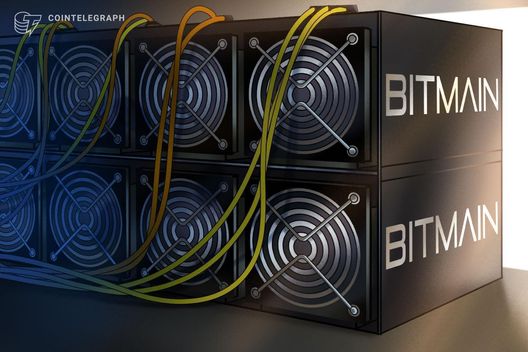Crypto News
JPMorgan freezes accounts of two stablecoin startups over sanctions concerns: Report

JPMorgan has reportedly frozen accounts linked to Y Combinator–backed stablecoin startups BlindPay and Kontigo after flagging exposure to sanctioned jurisdictions.
Published Date: 2025-12-27 06:54:36Creator: Cointelegraph by Amin Haqshanas
Read More
XRP may trade sideways in 2026 until bullish catalysts emerge: Analysts

The second half of 2026 will provide “more constructive conditions” for XRP to potentially surge, according to Nansen crypto analyst Jake Kennis.
Published Date: 2025-12-27 05:03:46Creator: Cointelegraph by Ciaran Lyons
Read More
Bitcoin saw bear market in 2025, 'decade long' bull run ahead: Mow

Bitcoin reached new all-time highs in October, yet Jan3 founder Samson Mow has described the year as a “bear market” and anticipates a major bull run ahead.
Published Date: 2025-12-27 02:54:31Creator: Cointelegraph by Ciaran Lyons
Read More
Bitcoin saw bear market in 2025, 'decade-long' bull run ahead: Mow

Bitcoin reached new all-time highs in October, yet Jan3 founder Samson Mow has described the year as a “bear market” and anticipates a major bull run ahead.
Published Date: 2025-12-27 02:54:31Creator: Cointelegraph by Ciaran Lyons
Read More
Ethereum's TVL could skyrocket '10X' in 2026: Sharplink CEO

A surge in stablecoins, tokenized RWAs and growing sovereign wealth fund interest could drive a major increase in Ethereum’s TVL in 2026, Sharplink’s co-CEO said.
Published Date: 2025-12-26 23:46:28Creator: Cointelegraph by Ciaran Lyons
Read More
Bitmain slashes ASIC prices amid mining industry turmoil: Report

Discounts and bundle deals were offered to mining operators, as 2025 ends on a bad note for the crypto market and the mining industry.
Published Date: 2025-12-26 21:39:03Creator: Cointelegraph by Vince Quill
Read More
Etheruem’s tokenization role takes focus as Tom Lee outlines bullish outlook

Fundstrat’s head of research said institutional tokenization supports a $7,000–$9,000 Ether price in early 2026 and a longer-term case for $20,000.
Published Date: 2025-12-26 21:15:54Creator: Cointelegraph by Nate Kostar
Read More
Aave founder denies buying tokens to influence failed DAO vote

Stani Kulechov's comments followed an uproar in the Aave community about the relationship between the Aave decentralized autonomous organization and Aave Labs.
Published Date: 2025-12-26 20:00:42Creator: Cointelegraph by Vince Quill
Read More
Bitcoin price, onchain flows and global macro: Here’s what changed in 2025

Bitcoin’s technical and onchain market structure was robust throughout 2025, but ever-shifting macroeconomic conditions eventually put a cap on BTC price. Will the trend shift in 2026?
Published Date: 2025-12-26 20:00:00Creator: Cointelegraph by Biraajmaan Tamuly
Read More
Bitcoin crawls to $88K as Aave faces governance drama: Finance Redefined

Cryptocurrency markets experienced a modest recovery this week, but spot Bitcoin ETFs extended a five-day losing streak amid thin year-end liquidity.
Published Date: 2025-12-26 19:00:00Creator: Cointelegraph by Zoltan Vardai
Read More